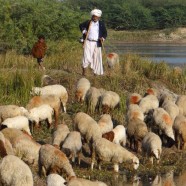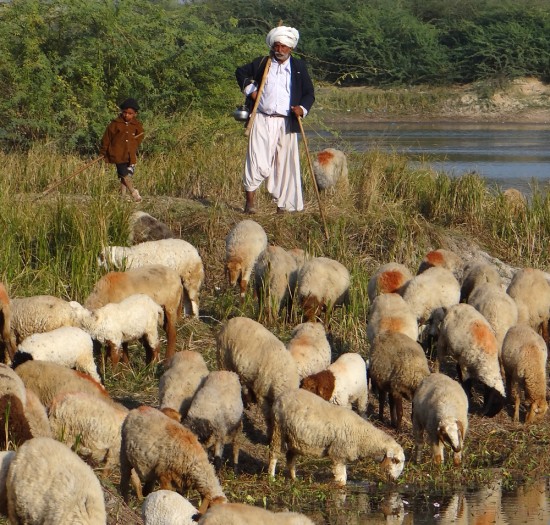Bird watching has attendant insights too. As the photographer stood by the small tank where women washed clothes in the evening sun, the birds on the other shore busily stocked up for the night. There were flocks of Starlings, Baya Weavers, Bank Mynas, and Wagtails, and out over the water,Pied Kingfishers, Swallows, Cormorants, Grebes as well as a water snake (most probably a Checkered Keelback).
As a flock of sheep came over the mound followed by the herder and his grandson, all of them gracefully made way so that the sheep could have their last snack as the sun dipped over the horizon. As soon as they had moved on, all the birds returned, their spaces restored, but now with the entry of insects after the dung that the sheep had deposited. A fresh frenzy of feeding began that ended only at sunset.
The bird population around the tank had wonderfully adapted to the human and large animal activity of the habitat, and all these communities lived in perfect balance and in a mutually beneficial relationship. The bird watcher needs to look not only at the birds but also the contexts they live in, so that the fulfillment of a sighting is completed by an understanding of where and how they feed, procreate and co-exist.
This photograph was made by Suresh Raghavan, a participant on our Wild West tour of Kutch in December 2011, in Zainabad at the edge of the Little Rann of Kutch, with a Sony HX100V.


